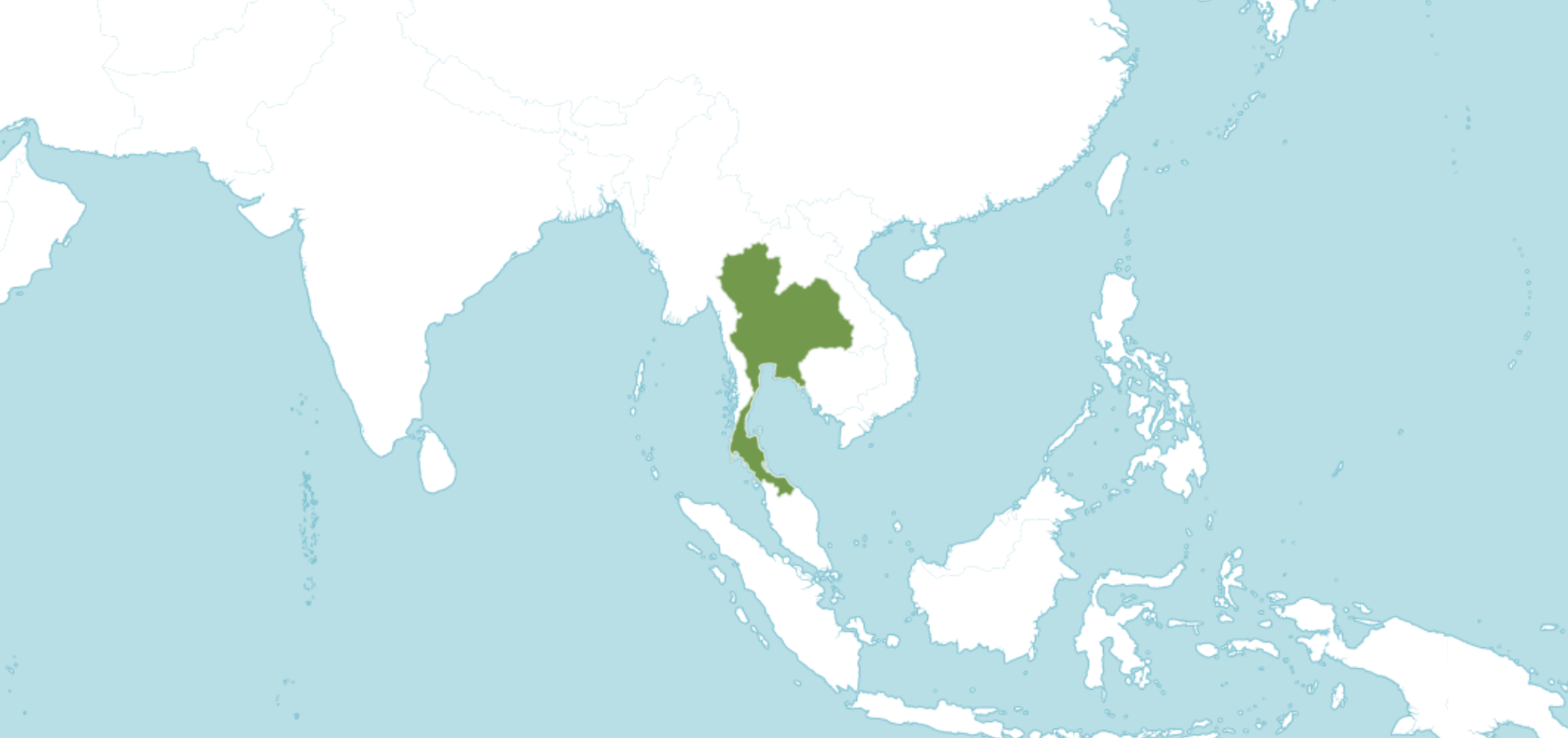AMORPHOPHALLUS ATRORUBENS
ORIGINAL DESCRIPTION:
Amorphophallus atrorubens Hett. & M. Sizemore, spec. nov
Amorphophallopygmaeo similis, laminis supra modice viridibus infra pallide viridibus, spatha pallide ad atro-castanea, floribus masculis infimis valde pyramidaliter inflatis, stigmatibus valde triangularibus differt.
Typus: Hetterscheid H.AM.737-T (holo L, spirit coll.), Thailand, Loei prov., along route 201, near Pha Nok Khan (coll. from a cultivated plant in the Leiden Botanical Garden; orig. coll. M. Sizemore).
SYNONYMS:
HOMOTYPIC SYNONYMS: N/A
HETEROTYPIC SYNONYMS: N/A
ACCEPTED INFRASPECIFICS: N/A
DISTRIBUTION: Thailand | NORTH-EASTERN: Loei (type: Sizemore s.n. cult. sub. Hetterscheid H.AM. 737-T, holotype -L), Udon Thani.
CLIMATE: Unknown
ECOLOGY: In heavy shade at the base of a limestone outcrop.
SPECIES DESCRIPTION:
Tuber short, irregularly elongate, 7 cm long, 4 cm diam., base with few short branches, older parts dark brown, young parts white. Petiole short, to 18 cm long, to 0.8 cm diam., smooth, turgid, dark greyish brown; lamina to 68 cm diam., rachises unwinged; leaflets elliptic, to 22 cm long, to 8 cm diam., acuminate, upper surface slightly glossy green.
INFLORESCENCE:
Inflorescence solitary, long peduncled; peduncle 13-23 cm long, 4-7 mm diam., dirty greenish brown to dark reddish brown, smooth, glossy; spathe erect, broadly ovate, 7-8 cm long, 8-10 cm diam., opening slightly around the spadix at female anthesis, base truncated, not separated from the limb, outside pale bronze green with brown veins, top purplish brown, inside pale greyish green, margin slightly concave, top broadly acute, base within smooth. Spadix sessile, longer than spathe, 8-10.5 cm long, slightly bending forward; female zone cylindric, 0.5-1.3 cm long, 1 cm diam., flowers slightly distant; male zone elongate conical, 3-4 cm long, 1-1.3 cm diam., lower flowers slightly distant, upper ones congested, or all congested; sterile zone between male and female zone 0.7 cm long, 1.1-1.4 cm diam., staminodial; appendix short conical, 3.7-4 cm long, 1.2-1.5 cm diam. at the base, laterally compressed or terete, top obtuse, surface smooth, off-white with a faint greenish flush, emitting a powerful gaseous smell in the first half of the day. Ovaries depressed, 3 mm diam., 1.5 mm high, pale green, upper part purplish or entirely purplish, unilocular; style c. 1 mm long, 1 mm diam., ridged, purplish; stigma large, depressed, 2.5 mm diam., 1 mm high, moderately or strongly and deeply trilobed, lobes conical, surface papillateflaky, white. Maleflowers consisting of 4 or 5 stamens; stamens 1.2-2mm long; filaments 0.2-1 mm long, connate, off-white, those in the lowermost flowers strongly enlarged; anthers 1 mm long, 1-2 mm diam., truncated, off-white; pores apical, connective broad, pale green, usually extending down to the lateral sides; pollen striate, ellipsoidal (length/breadth 1.74), 77 pm long. Staminodes broadly conical, rhombic in outline, base slightly constricted, top with a distinct depression or with a 3- to 5-rayed groove representing the borderlines of sterile stamens, c. 5 mm diam., c. 3 mm high, off-white.
VARIEGATED FORMS: N/A
ETYMOLOGY: The species epithet refers to the dark reddish colour of the spathe, from the latin atrorubens (ater, atra, atrum meaning black or dark, and rubens meaning to be red/reddish)
NOTES:
The inflorescence of Amorphophallus atrorubens is quite similar to that of Amorphophallus pygmaeus, but differs in having strongly triangular stigmas and staminodes between the male and female zones. The leaf of Amorphophallus atrorubens lacks the deep reddish purple lower surface typical of Amorphophallus pygmaeus. The pyramidal near-synantherous lower male flowers are shared with Amorphophallus saururus and Amorphophallus synandrifer.
In 2022, Tanwadee Watanachan posted an interesting Amorphophallus species on the Amorphophallus Facebook group with showed an inflorescence closely related to Amorphophallus atrorubens but which formed intercalary bulbils. Bjørn Malkmus-Hussein noted that he had seen a similar specimen that he was considering for publication but which was ultimately rejected due to showing too many intermediary forms. He notes that it’s possible the specimen chosen to formally describe Amorphophallus atrorubens was an outlier and that in fact most members of the species do form these bulbils.
CULTIVARS: N/A
HYBRIDS: N/A
REFERENCES:
Photos by David Livingtson, Tanwadee Watanachan, Sten Svanetsson and Humble Hen Farm





































